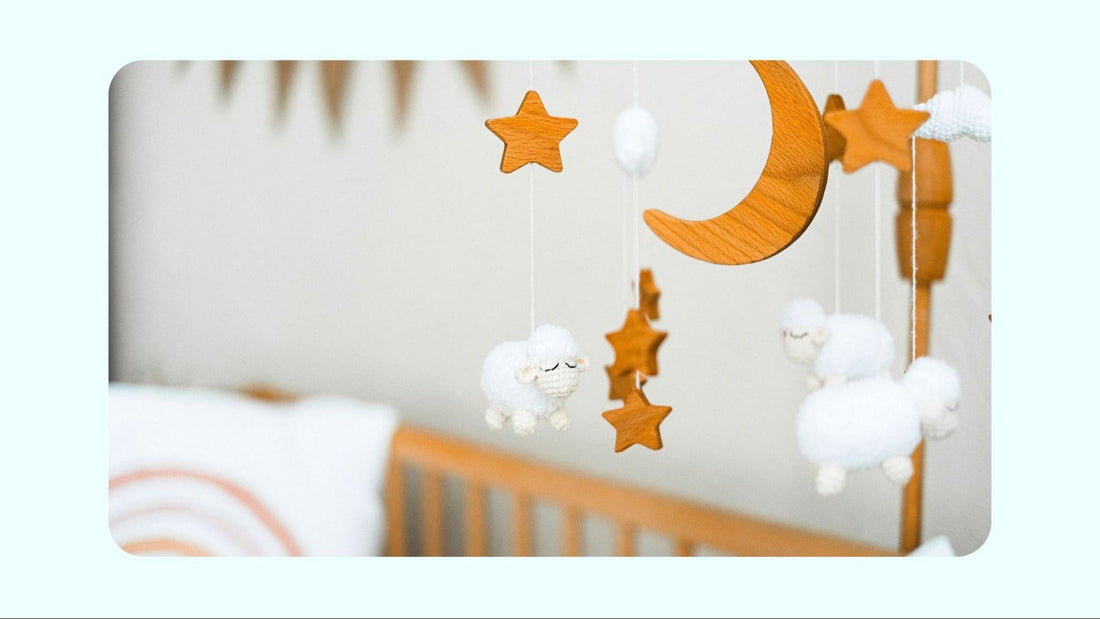
How to Create a Non-Toxic Nursery: Safer Furniture, Paint, & Baby Essentials
Share
Designing your baby’s nursery is a joyful milestone — but it’s also a chance to make thoughtful choices that support your child’s health from day one. Babies spend countless hours sleeping and playing in their nursery, so it’s worth taking the time to reduce harmful chemicals in their environment.
According to the American Academy of Pediatrics (AAP), children are uniquely vulnerable to toxic chemicals in the home because their bodies are still developing and they breathe more air per pound of body weight than adults.
These simple swaps can go a long way in reducing your baby’s exposure to toxic chemicals and creating a safer space.
Safer Swaps for a Non-Toxic Nursery
Start With Non-Toxic Nursery Furniture

Your baby’s crib, dresser, and changing station will be some of the largest and most impactful items in the room. Conventional furniture is often made with particleboard, plywood, and fiberboard that can release chemicals over time.
Particleboard and plywood often contain formaldehyde, a known carcinogen that can off-gas into indoor air. Choosing safer materials can significantly reduce these emissions.
Look for:
-
Solid wood instead of engineered woods or MDF
-
Water-based stains and finishes labeled low-VOC or zero-VOC
-
Greenguard Gold-certified furniture
Essential items to consider:
-
Non-toxic nursery dresser: Solid wood with a water-based finish
-
Non-toxic nursery chair: Natural upholstery like organic cotton or linen, free of flame retardants
-
Crib and changing table: Solid hardwood with non-toxic finishes
Pick Safer Surfaces: Non-Toxic Nursery Rug and Paint
Floors and walls cover a huge surface area in your nursery, meaning they have a big impact on air quality.
For paint:
The U.S. Environmental Protection Agency (EPA) recommends choosing zero-VOC paints to improve indoor air quality.
Look for zero-VOC or no-added-VOC formulas with low odor.
For rugs:
-
Non-toxic nursery rug: Choose natural materials like organic cotton, jute, or untreated wool.
-
Avoid synthetic fibers and rugs treated with stain repellents or flame retardants.
Safer Changing Station Essentials

You’ll spend a lot of time at the changing table in the first year. Make sure it’s a safe and functional space.
Look for:
-
A solid wood changing table with a non-toxic finish
-
A changing pad made from natural materials or food-grade polyethylene, free of PVC
-
Non-toxic nursery storage bins for organizing diapering supplies (wicker baskets and wooden bins are great options)
After you’ve put so much care into creating a non-toxic changing station, don’t overlook your diaper care products. NOLEO 3-in-1 Diaper Care is EWG Verified and fragrance-free, and it replaces all other wipes and creams. Use it with GOTS-certified Cotton Pads for a complete wet wipe replacement.
Smarter Non-Toxic Nursery Storage Solutions
Avoid plastic storage bins and MDF shelves that may release VOCs. Instead, choose:
-
Solid wood bookcases and toy storage with low-VOC finishes
-
Natural fiber baskets made from seagrass, rattan, or organic cotton
-
Simple open shelving to keep the space organized and breathable
Finishing Touches: Textiles and Air Quality

Round out your non-toxic nursery items with:
-
Organic crib sheets, swaddles, and curtains (look for GOTS-certified textiles)
-
An air purifier with a HEPA filter to help remove allergens and VOCs
- Regular ventilation (open windows and use exhaust fans)
Creating a Safer Space from the Start
A non-toxic nursery doesn’t have to be complicated. It’s about choosing simple, safe materials that support your baby’s development and protect their air quality. Start with the big items like non-toxic nursery furniture, rugs, and paint, and build your nursery from there.
